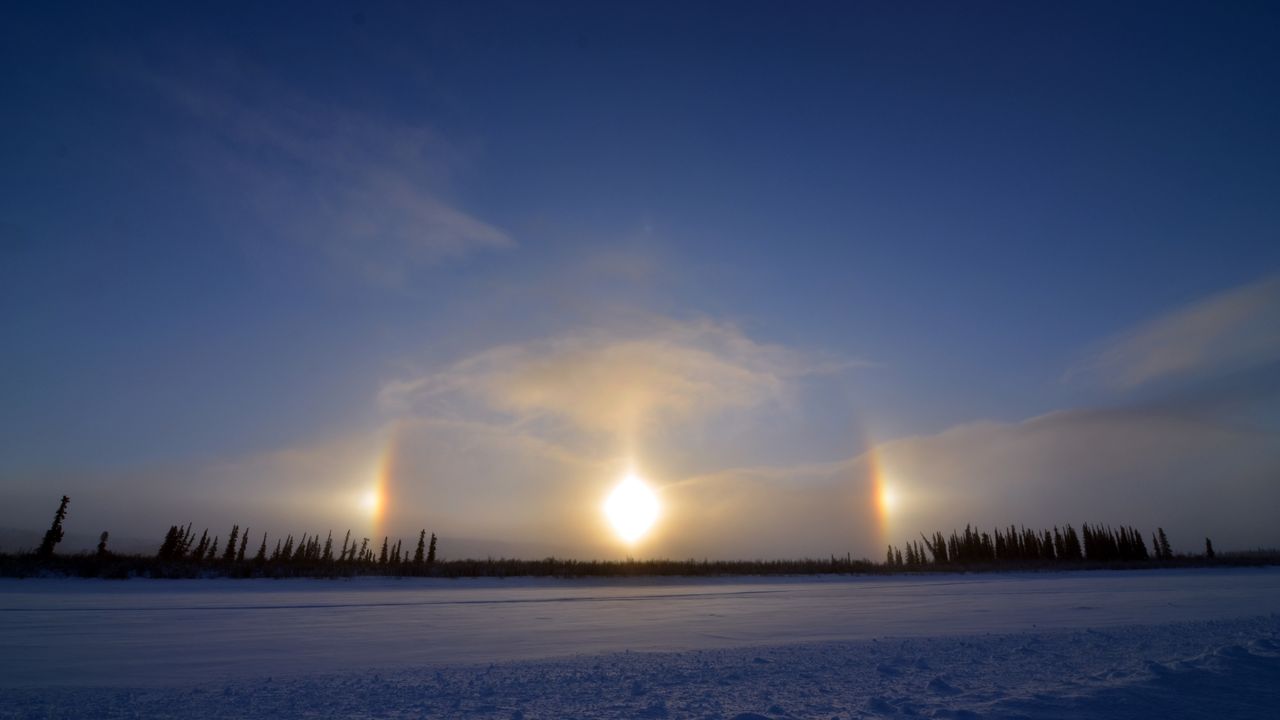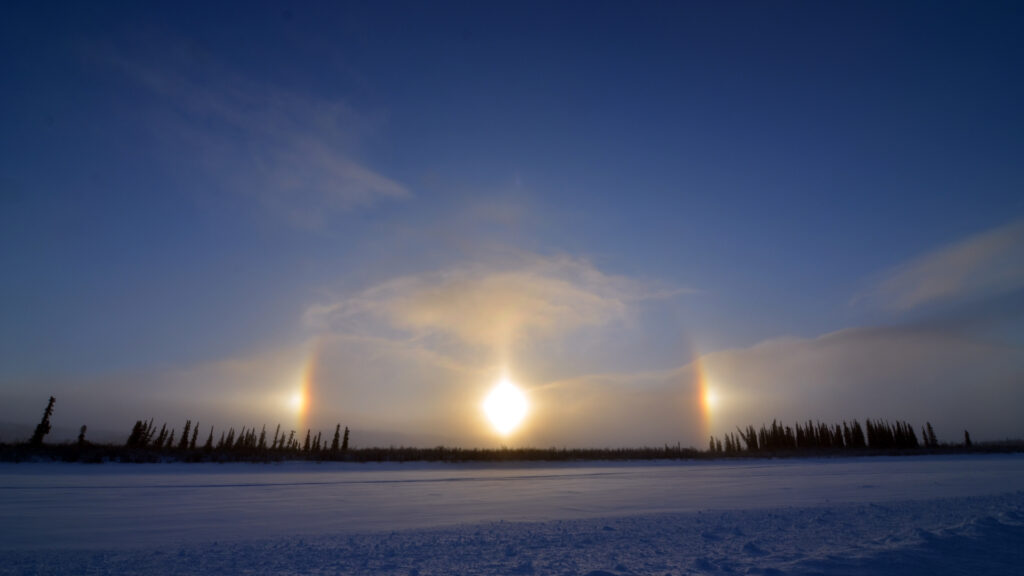
Beautiful light displays in the sky, such as glowing halos around the moon or bright spots beside the sun, aren’t just Earthly wonders. According to new research, similar dazzling effects might also occur on planets light-years away.
In a study published July 21 in The Astrophysical Journal Letters, Cornell University scientists propose that WASP-17b, a gas giant roughly 1,300 light-years from Earth, could host shimmering optical effects in its atmosphere. Discovered in 2009, WASP-17b is what scientists call a “hot Jupiter,” a type of gas giant that orbits very close to its star. As a result, the world experiences intense heat and hurricane-force winds that can reach up to 10,000 miles per hour (16,000 kilometers per hour).
These fierce winds, the researchers suggest, might be powerful enough to align tiny quartz crystals suspended in the planet’s upper atmosphere — similar to how ice crystals align in Earth’s atmosphere to create “sun dogs,” which are halos and rainbow-colored light pillars, by bending and scattering sunlight.
“If we were able to take a picture of WASP-17b at optical wavelengths and resolve the disk of the planet, we would see these types of sun dog features,” Nikole Lewis, an associate professor of astronomy at Cornell University in New York and co-author of the new paper, said in a statement.
The crystals responsible for these displays are composed of quartz, the same mineral commonly found in sand and gemstones. They are minuscule — about 10,000 could fit across the width of a human hair. Under the force of high-velocity winds, these particles could become mechanically aligned, like tiny boats drifting in formation down a river, Elijah Mullens, a graduate student in the astronomy and space science department at the university who led the new study, said in the statement.
The concept of mechanical alignment, where particles orient themselves in response to aerodynamic forces, was first proposed in 1952 by Cornell astronomer Tommy Gold to explain how interstellar dust particles might align with gas flows. While newer theories have replaced that model for cosmic dust, study authors Mullens and Lewis argue it may still apply in the extreme conditions of exoplanetary atmospheres.
Related: ‘A completely new phenomenon’: Astronomers spot a planet causing its star to constantly explode
Where the JWST’s eye comes in
Although telescopes can’t directly image these phenomena on WASP-17b due to its vast distance, scientists can infer their presence by studying the planet’s atmosphere with the James Webb Space Telescope (JWST), which observes the universe in infrared light. In 2023, Lewis and Mullens were part of a team that used JWST to identify signs of quartz nanocrystals in WASP-17b’s high-altitude clouds.
“We didn’t expect to see quartz crystals in a hot Jupiter atmosphere,” Lewis said in the statement.
To investigate further, the researchers built detailed models simulating how different crystals, including quartz, enstatite and forsterite, would reflect or transmit light depending on how they’re oriented. Their results showed that even small changes in particle orientation could produce noticeable differences in the light signals the JWST could detect.
“When we started looking at planetary atmospheres, in particular these hot Jupiters, it occurred to me that with 10,000 mile per hour winds zipping around in these very dense atmospheres, surely the grains would align,” Lewis said in the statement.
Even if the crystals don’t align perfectly with the wind, they may still orient themselves vertically or be influenced by electric fields, creating distinct visual effects as they interact with starlight, scientists say.
Mullens will continue exploring particle alignment in WASP-17b’s atmosphere through a newly approved JWST observation program he’s leading in the coming year, according to the statement.
“Other than being pretty, these effects can teach us about how crystals are interacting in the atmosphere — they’re really information-rich,” he said in the statement.
